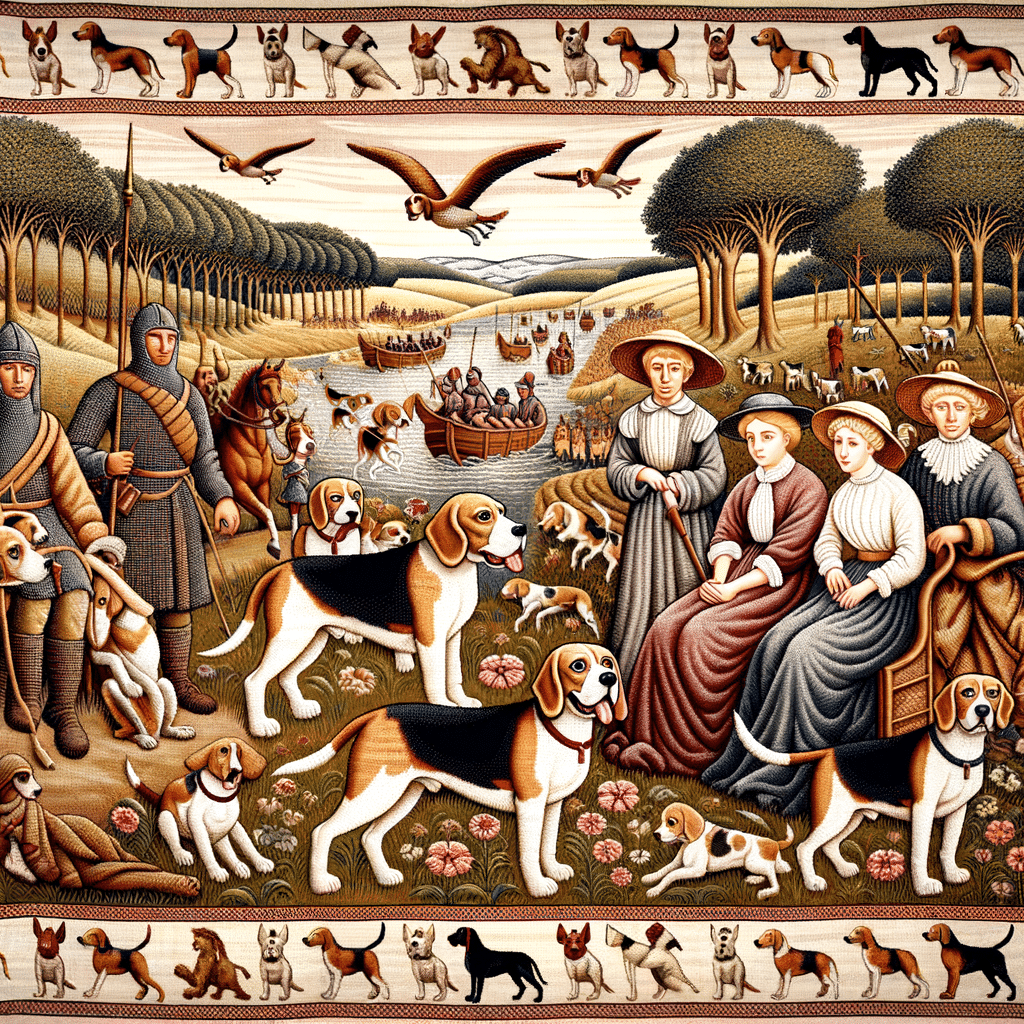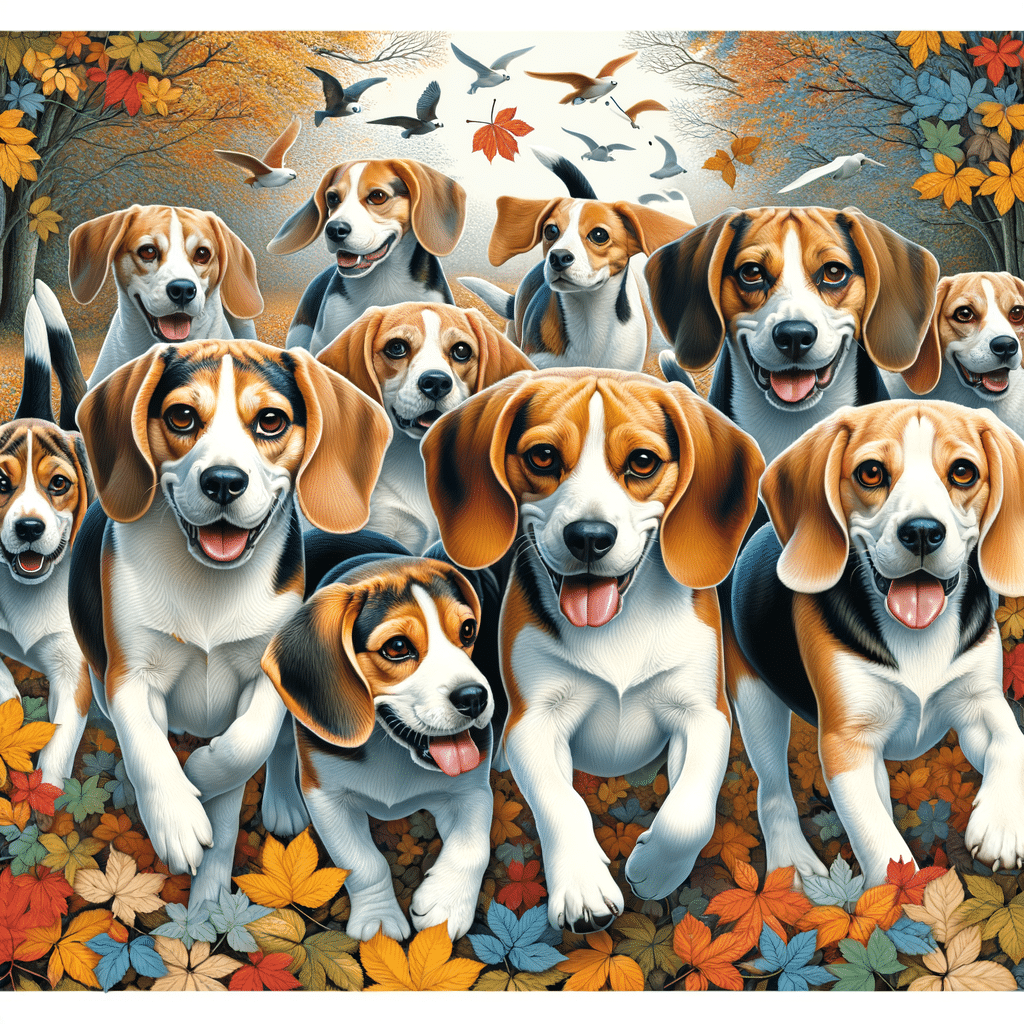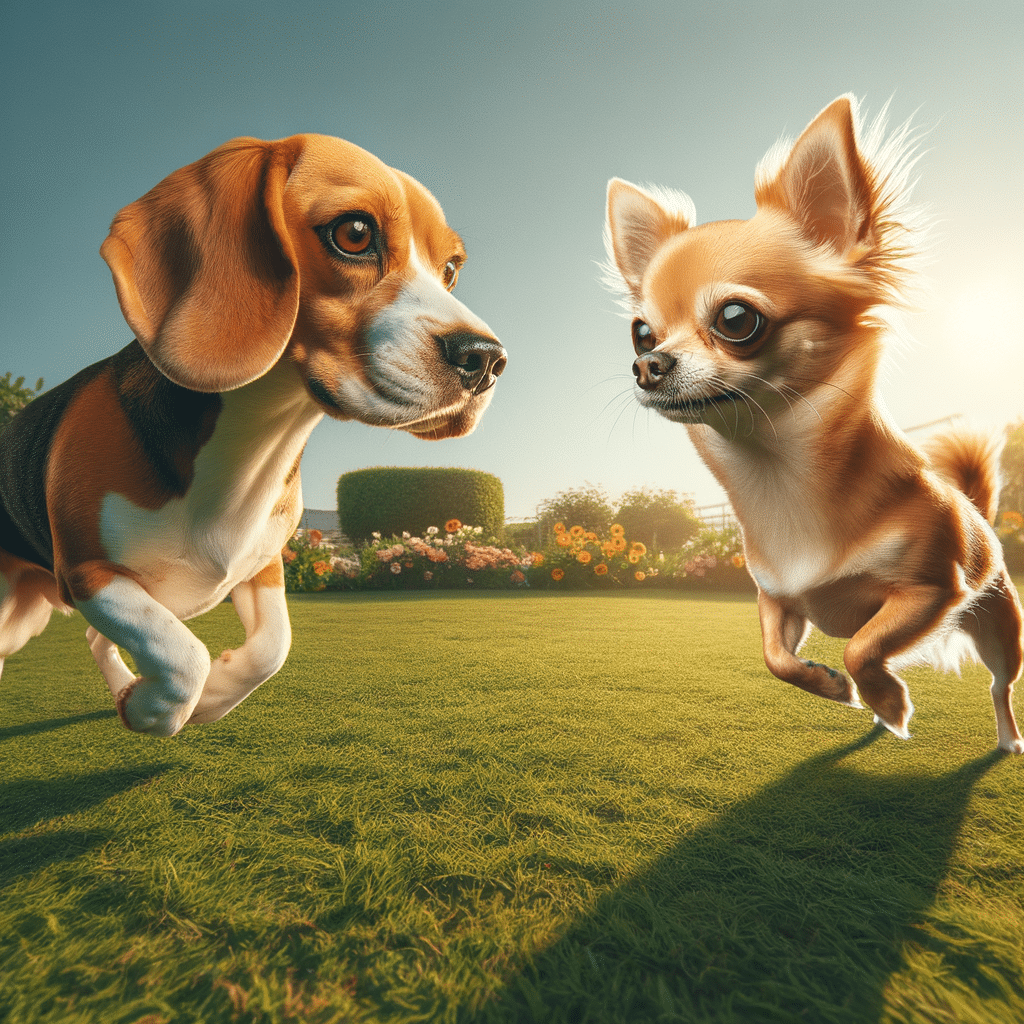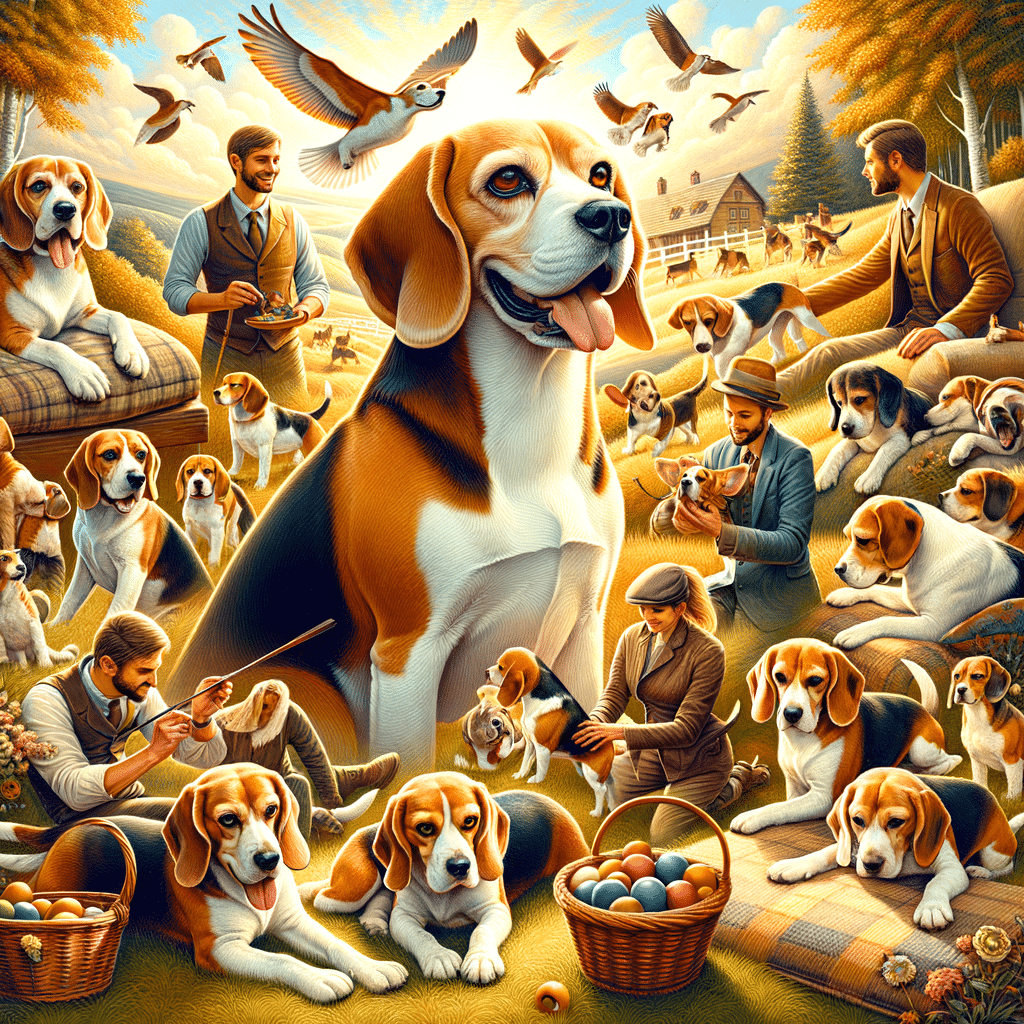The beagle breed is well-known for its keen sense of smell and friendly disposition. Its origins are in hunting as a scent hound. Today, beagles make excellent family companions. Recognizing a purebred beagle involves understanding the breed standard, which encompasses physical attributes such as size, color, distinctive features, and temperament traits.
In This Article
Purebred beagles come in two main varieties based on height but are generally small to medium-sized dogs. Their coat, usually in black, white, and tan combinations, is one of the breed’s most recognizable features. While they are known for their good nature, they also have certain behaviors, such as baying and a propensity to follow their noses, which can lead to a need for patient, consistent training.
Highlights
- Purebred beagles are distinguished by a breed standard that includes physical and behavioral characteristics.
- They are typically friendly, compact dogs with a tricolor coat suited for hunting and companionship.
- Potential beagle pet parents should be prepared for traits like baying and a strong inclination to scent, which require patient training.
Breed Origins and History
The beagle breed boasts an extensive lineage, with a history interwoven into the fabric of England’s past. These small to medium-sized hounds were refined over centuries to possess a keen sense of smell and an amiable temperament.
Development of the Beagle Breed
Beagles trace their roots to an ancient scent-hound breed known for its hunting prowess. Great Britain plays a pivotal role in the breed’s development, transforming it from its early ancestors into the beagle recognized today. Historical records suggest that the beagle evolved from early Greek hounds before being further developed in England. These hounds were likely imported to England during the Roman occupation, setting the stage for the emergence of the beagle as a distinct breed.
During the Norman period, particularly in the 11th century, the Talbot Hound, a white scenthound, contributed to the beagle’s ancestry. The beagle’s history is marked by a continual process of selective breeding, focusing on enhancing its capacity as a hound dog for tracking small game.
Beagle Popularity in England
In Great Britain, beagles became popular hunting dogs and held a special place among the nobility. The affection for these hounds stretched from King Henry VII to Queen Elizabeth I, who were known for their fondness of the beagle, particularly the small-sized variety known as the “pocket beagle.”
Beagles prospered in England due to their utility in hunting and agreeable nature. By the 19th century, standardized breeding practices led to the consolidation of the modern beagle’s characteristics: a proficient hound with a strong nose, a sturdy build, and a sociable personality. The breed’s enduring presence in English history and its roles in hunting and companionship solidified its popularity.
Physical Characteristics
Physical characteristics are definitive factors that help identify a purebred beagle. They are a culmination of distinct features that range from the coat and color variations to the specific traits of their ears, tail, and size.
Recognizing Purebred Beagles
Certain physical indicators should be examined to identify a purebred beagle. Purebreds typically have a sturdy and compact body. Their back is straight and muscular, supporting an alert attitude. A purebred beagle’s legs are straight at the front with well-muscled hindquarters, and they often possess a white streak on their tail, known as the flag.
Coat and Color Variations
The beagle’s coat is usually short and has a hard texture. It is described as a double coat that withstands various weather conditions. This double coat leads to routine shedding. There are various coat colors, including:
- Tricolor (black, brown, and white)
- Red and white
- Lemon and white
These color variations can be distinct or mottled patterns.
Distinctive Beagle Features
Characterized by their long, floppy ears, beagles are prone to ear infections due to less air circulation. Their expressive, bright eyes exhibit a friendly and eager temperament. A beagle puppy may display softer features, but these become more defined as they mature into adulthood, showcasing their muscles and overall agility.
Temperament and Behavior
The beagle is a friendly and curious breed known for its loyalty and high energy levels. Understanding its temperament and behavior is essential for proper training and integration into the home.
Common Behavioral Traits
Beagles are scent hounds, originally bred for hunting due to their keen sense of smell. This can sometimes lead them to roam if they pick up an interesting scent. Consequently, it is important to ensure they are on a leash during walks. Regarding vocalization, beagles are known for their tendency to bark and howl, which can sometimes be considered excessive barking. Beagles are often described as playful and affectionate and enjoying the company of humans and other pets.
Beagle Training Essentials
Training a beagle requires consistency and patience, as it can be distracted by its strong sense of smell. Beagles respond well to positive reinforcement techniques. Since they possess a moderate to high energy level, beagles require ample exercise and mental stimulation to prevent destructive behavior. Early obedience training is recommended to manage potential stubbornness and instill good habits.
Key training areas to focus on include:
- Obedience: Teach commands like “come” and "stay" to manage their roaming instincts.
- Barking: Address their vocal nature with commands like “quiet” to curb excessive barking.
- Socialization: Introduce them to various environments and situations to prevent anxiety.
Home and Family Integration
Beagles are friendly and generally integrate well into family settings, showing affection towards children and adults. They thrive in an environment where they receive consistent company, as isolation can lead to howling and destructive behaviors. Their curious and energetic traits mean they need a secure space to explore without risking wandering off.
Factors for successful integration include:
- Secure yard: Prevent roaming and give space for exercise.
- Routine: Provide structure and assurance to reduce anxiety.
- Family involvement: Engage with the beagle in activities that satisfy their need for interaction.
Care and Health Considerations
Caring for a purebred beagle requires consideration of particular grooming needs, appropriate nutrition, regular exercise, and vigilance toward potential health challenges. These energetic and family-friendly pets thrive in environments where their care is managed correctly.
Grooming and Hygiene
Beagle grooming requires relatively little effort. To maintain good hygiene, they need weekly brushing with a firm bristle brush to control shedding and keep their coat in good condition.
- Bathe: Every few months or as needed, using a mild, non-irritant shampoo
- Ears: Clean their large, floppy ears regularly to prevent infections
- Nails: Trim nails monthly to prevent overgrowth, which can lead to discomfort
- Teeth: Dental hygiene can be managed with dental chews and regular brushing to prevent tartar build-up
Nutrition and Exercise
A balanced diet and regular exercise are crucial.
- Diet: High-quality dog food tailored to age, size, and energy levels can prevent obesity, a common issue in the breed
- Exercise: At least an hour of exercise daily to help maintain a healthy weight and manage their high energy levels
- Play: Beagles are active and playful, benefiting from being exposed to a variety of dog toys and interactive games that also satisfy their instinct to sniff and explore
Health Challenges
Certain health issues can make beagles susceptible to disease. Regular check-ups at the veterinarian and a proactive approach to their health can help catch and manage these concerns early.
Common health issues include ear infections, allergies, cherry eye, epilepsy, hypothyroidism, and hip dysplasia. DNA testing can be done to ascertain any genetic predispositions to certain diseases.
A beagle’s life expectancy is usually 11-15 years with proper care. Keep them up to date on vaccinations and parasite control to prevent common diseases and infestations.
Potential beagle owners must understand and commit to the level of care these pets require to lead happy, healthy lives.
Frequently Asked Questions
Readers will find reliable and essential information on purebred beagles in this section.
What factors influence the price of purebred beagle puppies?
The price of purebred beagle puppies can vary based on lineage, breeder reputation, location, and demand. Show-quality beagles with exceptional pedigree may command higher prices.
What are the common temperament traits of beagles?
Beagles are known for their friendly, curious, and merry disposition. They are intelligent dogs but may exhibit some stubbornness, necessitating consistent training.
How can potential owners identify reputable beagle breeders?
Reputable beagle breeders often demonstrate transparency regarding the puppies’ health, allow visits to view the living conditions, and provide health clearances for genetic conditions.
What are the primary differences between the various beagle types?
Beagle types mainly differ in size, with two recognized varieties: those standing under 13 inches at the shoulder and those between 13 and 15 inches. They all share similar traits and are well-suited for tracking and hunting.
How should beagle pet health and nutrition be managed?
To maintain a beagle’s health, owners should provide a balanced diet, regular exercise, vaccinations, parasite prevention, and routine check-ups with a veterinarian.
What considerations should families make before adopting a beagle as a pet?
Families should consider the beagle’s need for companionship, exercise, and mental stimulation. They should also be prepared for potential veterinary expenses and commit to the dog’s lifespan, which varies from 11 to 15 years.






